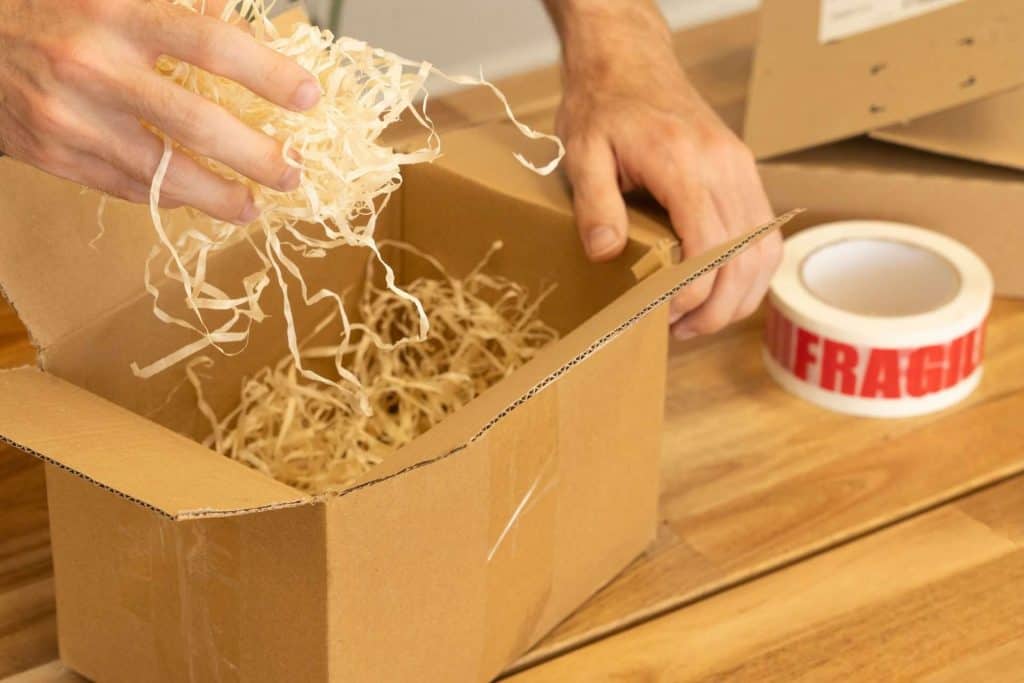If you have many fragile items, packing your belongings can add to the stress of any house move. It is common to worry about the safety of your breakable items during transportation, after all, we all know that moving involves a lot of handling of boxes, and there’s nothing more annoying than finding your valuables broken when you get to your new house.
For professional tips on how to pack fragile items for moving, if you’re planning on doing it yourself, read on.
Preparation is Key
Organising in advance is essential when moving delicate items to prevent expensive damage to your possessions. For this reason, it’s crucial to choose the best packaging material to keep everything safe during transportation and to gather everything before you begin packing. These are the items that you will need:
- Packing tape
- Strong cardboard boxes to transport goods in
- Markers and labels to mark and identify boxes
- Bubble wrap
- Packing Peanuts
- Corrugated cardboard inserts for better protection
- Bungee cords or rope to hold packaging in place
Many people will use old towels or newspapers to pack delicate items because they already have them, but doing so can harm your belongings. However, after properly wrapping items, you can use bedding or thick blankets to cover furniture and further protect them. Many removal companies can supply you with packing supplies that you can order and have delivered right to your door, or they can do the packing for you, giving you proper peace of mind that your fragile items will be safe in transit.
How to pack fragile items for moving
To avoid risking damage to your possessions, packing and moving delicate items requires careful planning and lots of protective materials. Our best advice on packing certain types of delicate items to keep them secure and safe during your move is detailed below.
How to pack glassware and ceramics
Glassware, plates, and china tea sets are particularly difficult items to move safely because they are notoriously easy to break. Here are our best recommendations for making sure your breakables get to your new house undamaged:
Choose smaller boxes because they are much easier to handle and have less space for items to move around during transport.
To protect your items, put some bubble wrap, packing peanuts, or packing paper on the bottom of the box.
Glassware should be packed with packing paper inside and any stems wrapped in bubble wrap. Secure the entire glass with packing tape after wrapping it in bubble wrap and packing paper.
Tableware and ceramics should be packed as described above, with extra care given to any handles or decorative elements. Next, use packing paper and bubble wrap to separate the plates and bowls, stacking 4 or 5 plates at a time. Then, cover the stack once more in paper and tape it down.
Carefully pack items into smaller boxes, ensuring you utilise any extra space with packing peanuts, bubble wrap or padding for extra security.
Packing a TV for moving
Knowing how to pack a TV for a move without it breaking can be challenging. Nobody wants to waste time and money searching for a new television while they are undergoing a stressful home relocation, after all.
Using the original box that your TV came in is one of the best ways to protect it during a move, even though many of us don’t think to keep the packaging. There are several other ways to pack your TV if the original box is torn or you’ve already thrown it away:
To make it easier to set up your TV in your new place, start by taking a picture of it with all the cables plugged in.
Then, remove all the leads, cables, and other attachments to your device. To keep them together during the move, wrap them in bubble wrap, label them, and place them in a different bag or box.
Use bubble wrap to create an additional barrier around the screen to prevent scratches, and secure it with packing tape.
Then, use a small rope or bungee cord to fasten a thick blanket around the screen and the base.
Packing electrical goods for moving
For electrical items like toasters, computers, and other appliances for the home or kitchen, you need to make sure they are packed into smaller boxes to prevent breakage and wrapped in protective layers to prevent scratches or marks.
Packing delicate furniture
Moving delicate or antique furniture can be intimidating, especially for bigger items like pianos or wardrobes. This is how to pack furniture items like a pro:
When possible, break down your furniture into the smallest pieces possible. This will make it much easier to move and protect.
Any delicate furniture should be wrapped after thoroughly cleaning to avoid dents or scratches during transportation. If at all possible, remove any glass or breakable tops or components and wrap them in bubble wrap before sealing them with packing tape.
Our top tips when packing fragile items for moving
- Always label your boxes; otherwise, you may forget where you put what in each one and need to be cautious when bringing them into your new house. Make this clear with “fragile” tape or label the box clearly to prevent careless dropping or moving. Indicating which way the box should be carried and moved is also a good idea.
- Keep everything apart: To prevent cracks and breaks, keep your fragile items as separate as you can and wrap them up individually rather than simply throwing them all in the same box. Similar items can go in the same box, but avoid placing heavy items on top. This not only keeps fragile items safe but also makes it easier for you to keep track of where everything is.
- While moving is undoubtedly one of life’s most stressful experiences, it’s important to take your time when packing fragile items, so don’t rush the process.
Summary
Moving home is stressful enough without having to worry about breaking or smashing your fragile items during the move.
Following our guidelines above should help you to keep your most prized and fragile possessions in one piece, and also help to keep your own stress levels at a more manageable level whilst you move home.
King’s Removals will be able to give you the best advice on how to pack your fragile items, and should also be able to provide you with all the packing materials you need, or even do the packing for you, so there aren’t any accidents en route to your new home.

